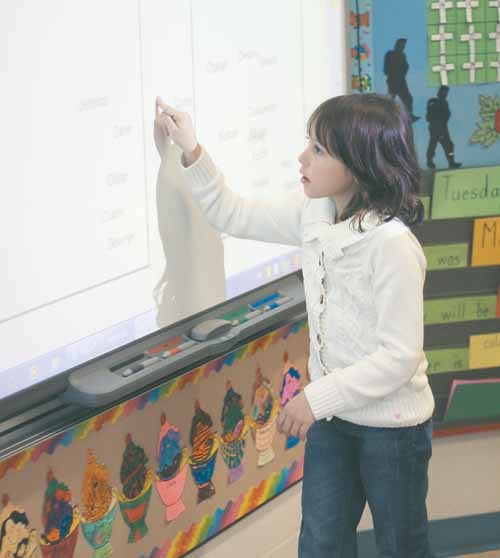The warnings are familiar by now.
Only 15 percent of Saskatchewan children are reaching the 90 minutes of exercise per day recommended in Canada's physical activity guidelines. For the first time in modern history, the current generation of children is facing a shorter life expectancy than that of their parents, according to the Heart and Stroke Foundation.
Saskatchewan's schools have not been oblivious to the news. Aware that they are responsible for the province's children during a large part of their waking hours, many schools have been making efforts to incorporate physical activities into their schedules that go beyond daily Physical Education classes.
Yorkton's MC Knoll Elementary is one school that has made particular strides.
"This is something that we take very seriously, and something that we're absolutely trying to conquer," says Mark Schindle, Grade 6/7/8 Phys. Ed. teacher at the school.
The facility, notes Principal Gord Gendur, has certain advantages that make this process easier: a walking track surrounds the school, a newly-built playground was designed to be accessible to children of all abilities, and an agreement with the city gives students ready access to two attached gymnasiums.
But most improvements are simply the result of staff and students resolving to do things differently.The changes don't have to be big. During morning attendance, for example, children at MC Knoll no longer announce themselves from their desks. Instead, they get up and drag their names from the "Absent" box to the "Present" box on the classroom's SMART Board.
Desks in general have a smaller role in the classroom than they once did. Most teachers try to incorporate action and movement into lessons that were stationary a few years ago.
Some policy changes are more radical. Older students who have lost interest in the playground used to be permitted to stay inside during breaks. Today, they're sent outside with the rest of the kids. Faced with a choice between standing around doing nothing or making the best of it, students soon start bringing their own sports equipment or whatever else they need to entertain themselves outside. Intramural sports programs in the gym also help keep kids busy when it's cold outside.
"Adventure Education" is another activity-boosting program recently implemented by the school. Scheduling requires that only one half of Grade 7 and 8 students attends Practical and Applied Arts classes at a given time, leaving the remaining half to be occupied elsewhere. Traditionally, this has meant classroom activities, but Adventure Ed brought a new approach.
"Now we're doing some community engagement, which just means that we're taking our kids beyond our school walls," explains Schindle. "We've taken them tobogganing at Rodney Ridge, we've had them do archery, we've taken them curling at the curling rink. So they're learning a lot of different skills that maybe they haven't been exposed to before."
Golfing, biking, swimming, cross-country and downhill skiing, snowboarding, and billiards have all been included in the program.
"The intent of this all is to expose these kids to a wide variety of activities, and then they can decide what they want to explore more on their own."
Active children, Schindle notes, tend to grow into active adults.
"These are the initial steps to getting these kids more involved."
MC Knoll also offers a number of one-shot events annually. The Shamrock Springers gymnastics club provides a day of gymnastics training for students at the school in exchange for the use of the facility for their yearly tournament. The Saskatchewan Soccer Association and the Saskatchewan Field Hockey Association have been brought in for skills clinics in their respective sports.
But for the kids, one of the biggest highlights of the year is Survivor day: a 30-hour period packed with themed activities. Last year was titled Survivor Olympics. The 10th annual event this January will be Survivor Dance.
"For the entire day, all of our children in the school are going to be involved in dance," says Gendur. "But then at 3:30, some of the kids go home and a hundred of the other kids stay the entire night, and the whole night is activities right until 10 the next morning. We go swimming, we rent the curling rink, we do some skating, we go cross-country skiing. We do 30 hours of activity, and then in the morning we have our wrap-up assembly with the 100 kids who survived the 30 hours of activity."
It's all part of a school-wide effort to get local youth more active: a change that school staff say improves not just the children's health, but their focus in the classroom, too.
"We're doing our best to try and get these kids moving and realize that there is a lot of fun in doing physical activity," Schindle says.



